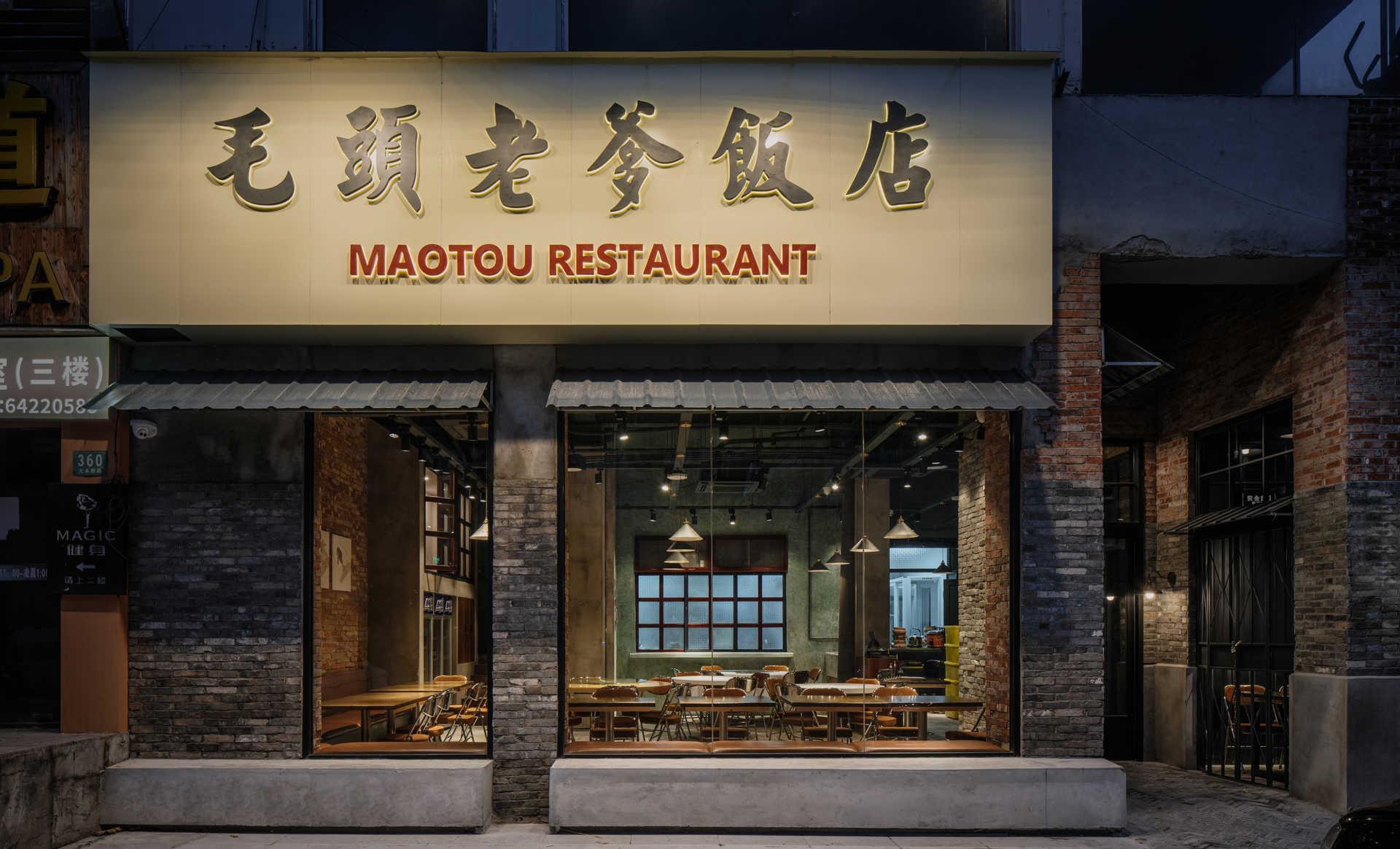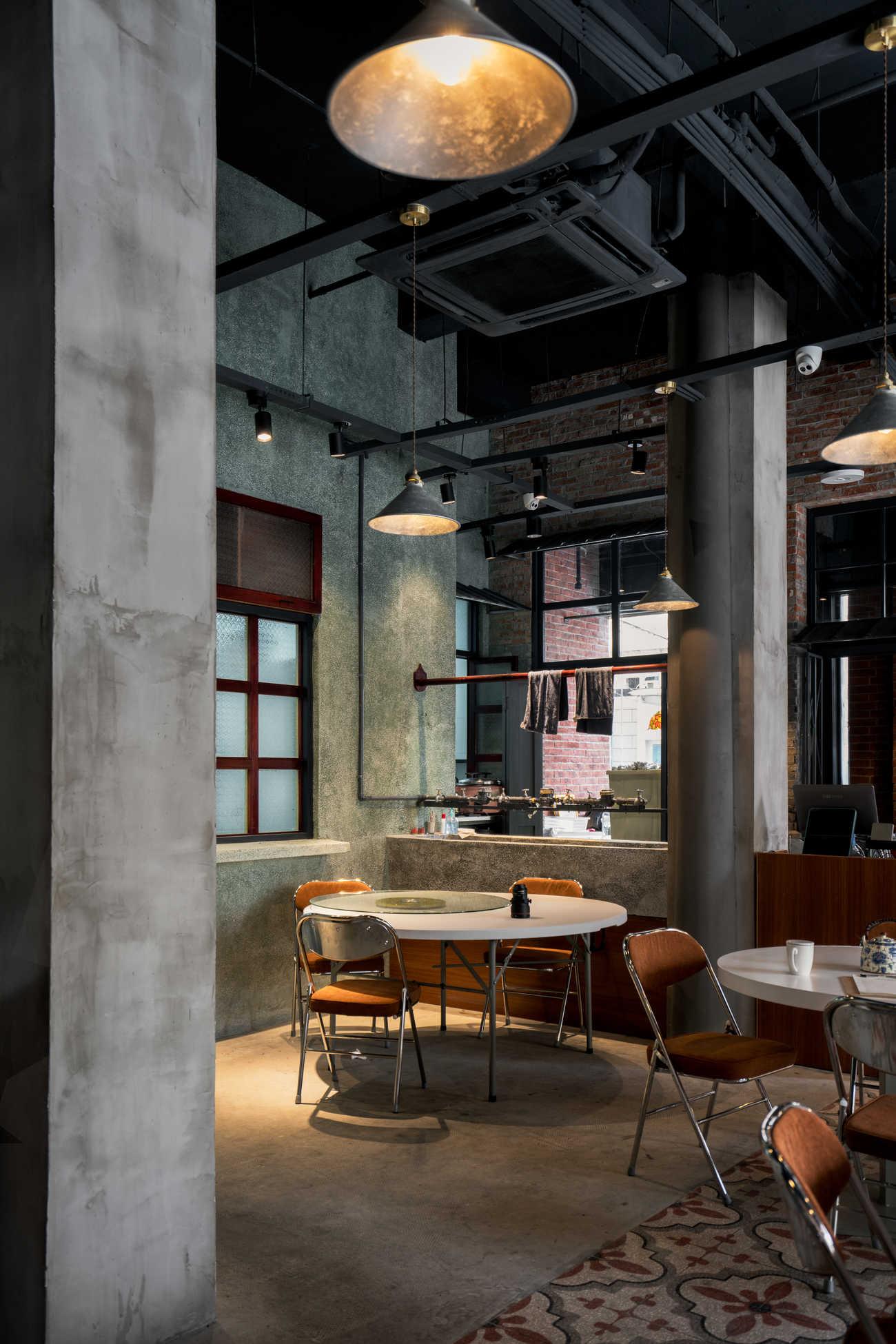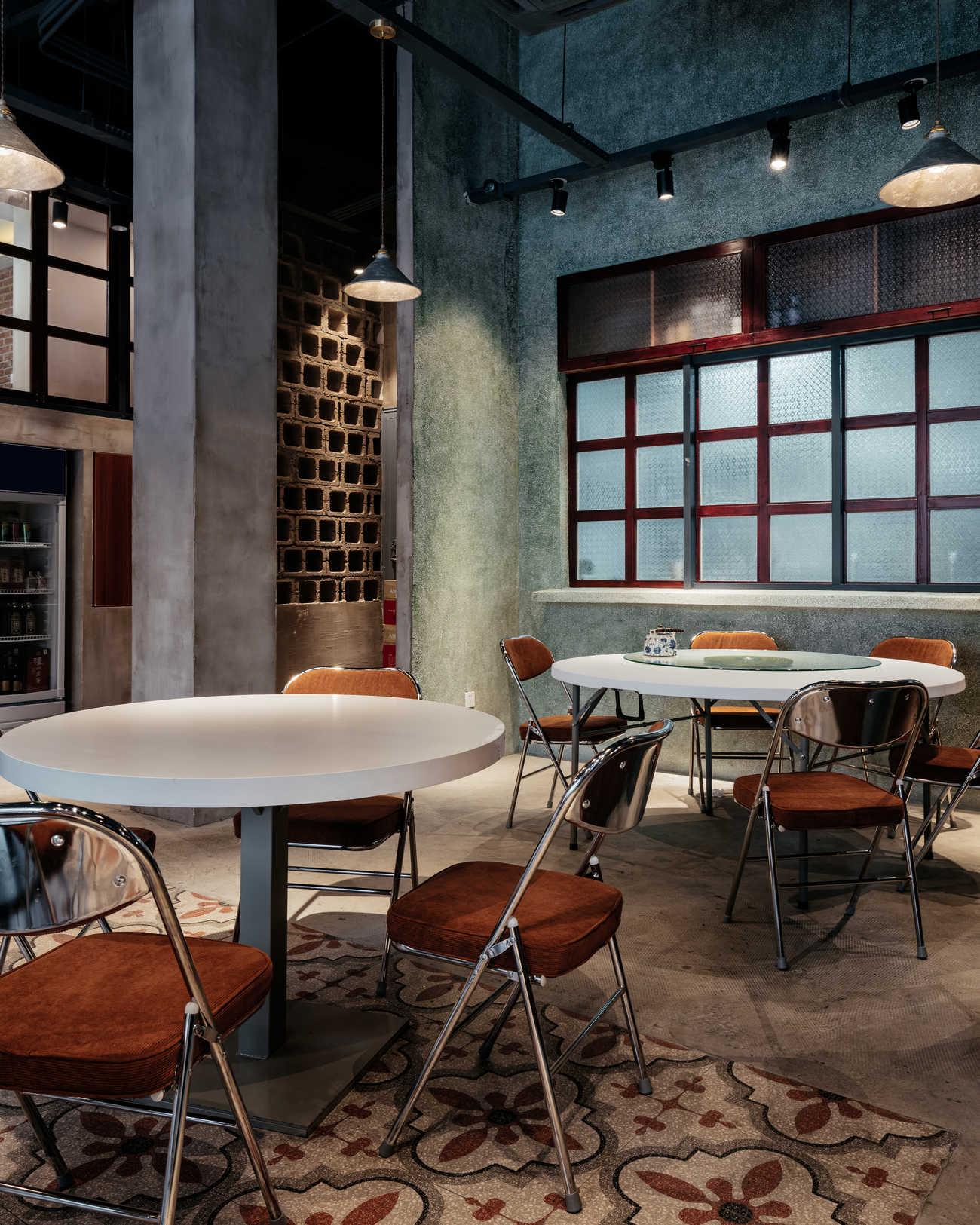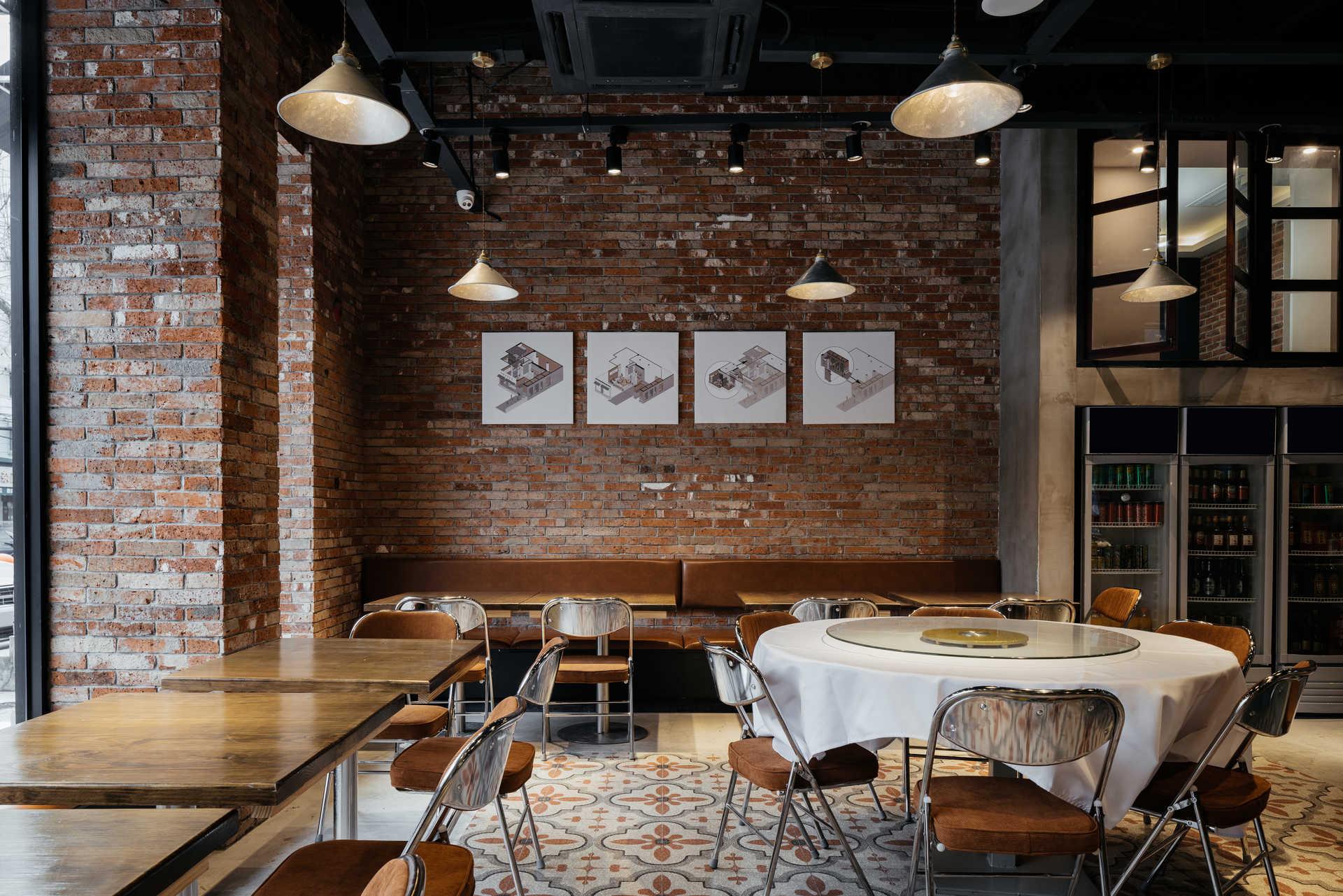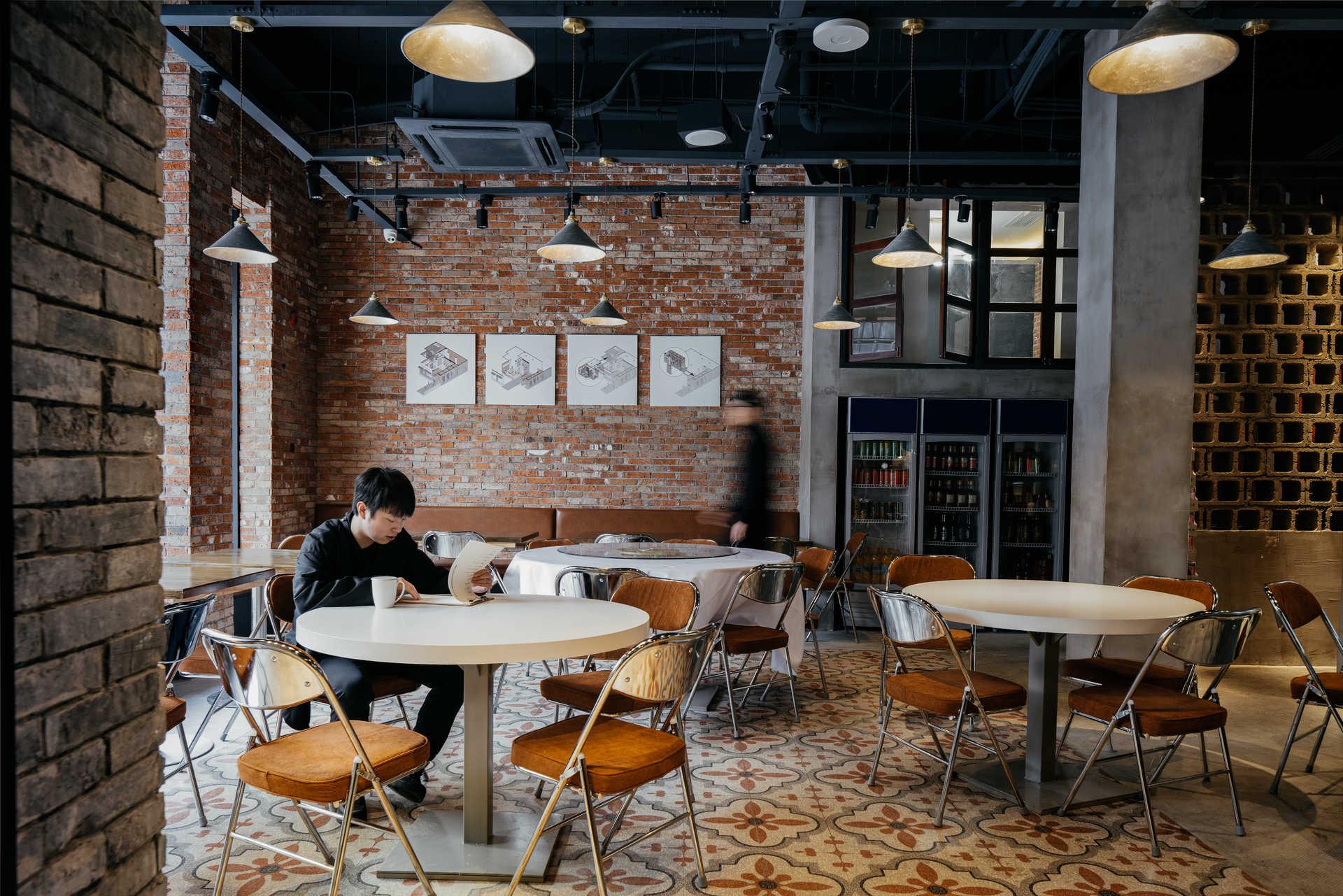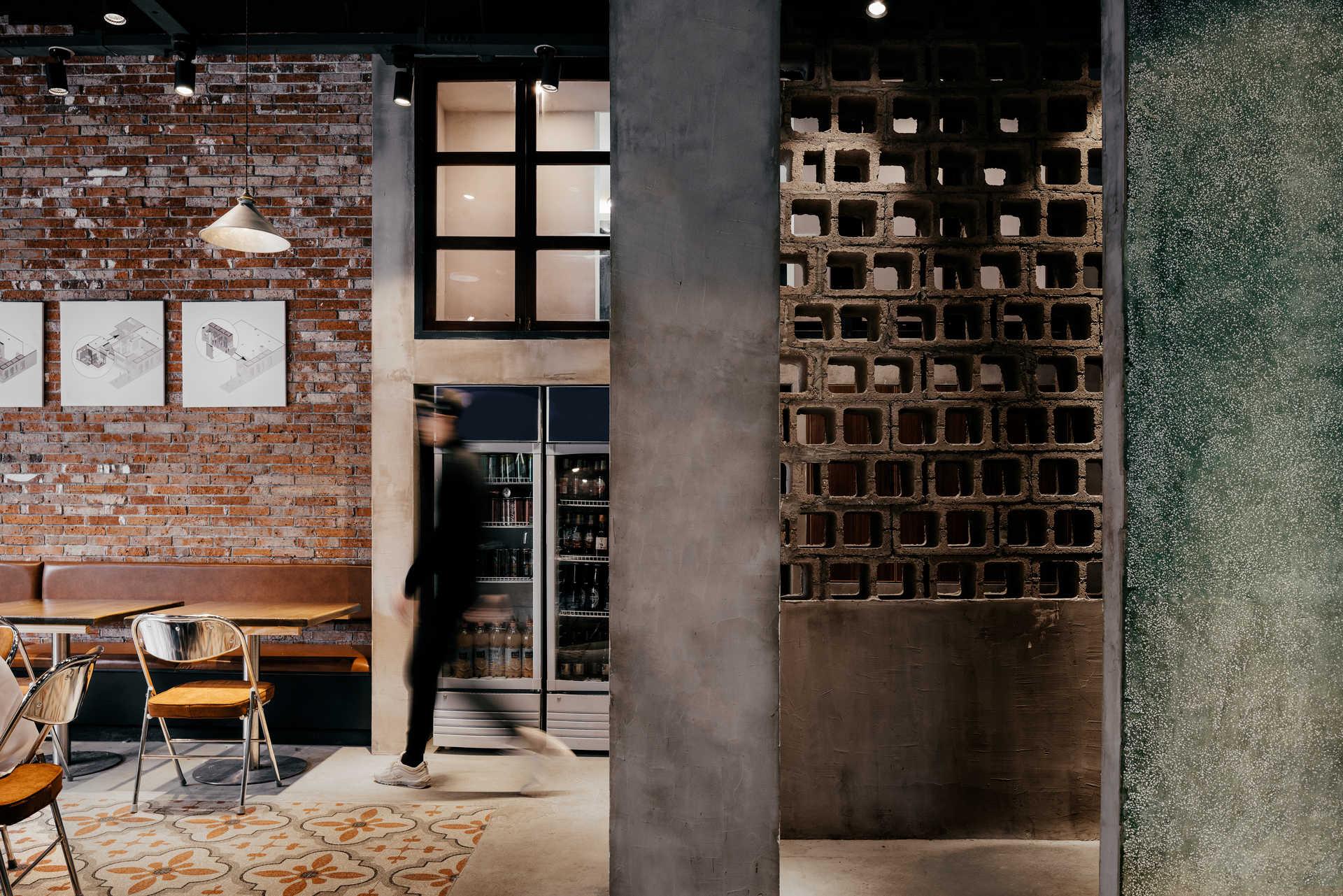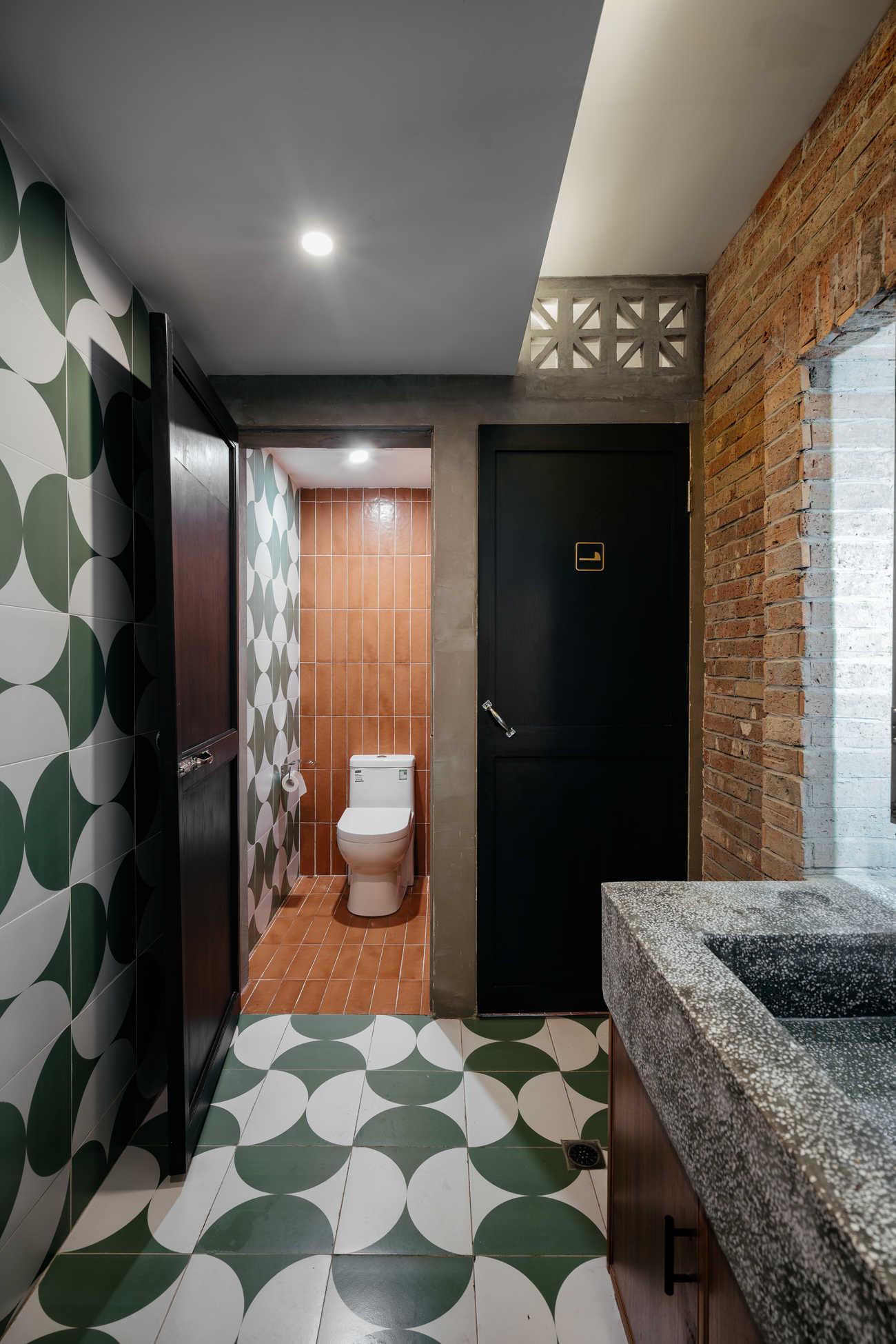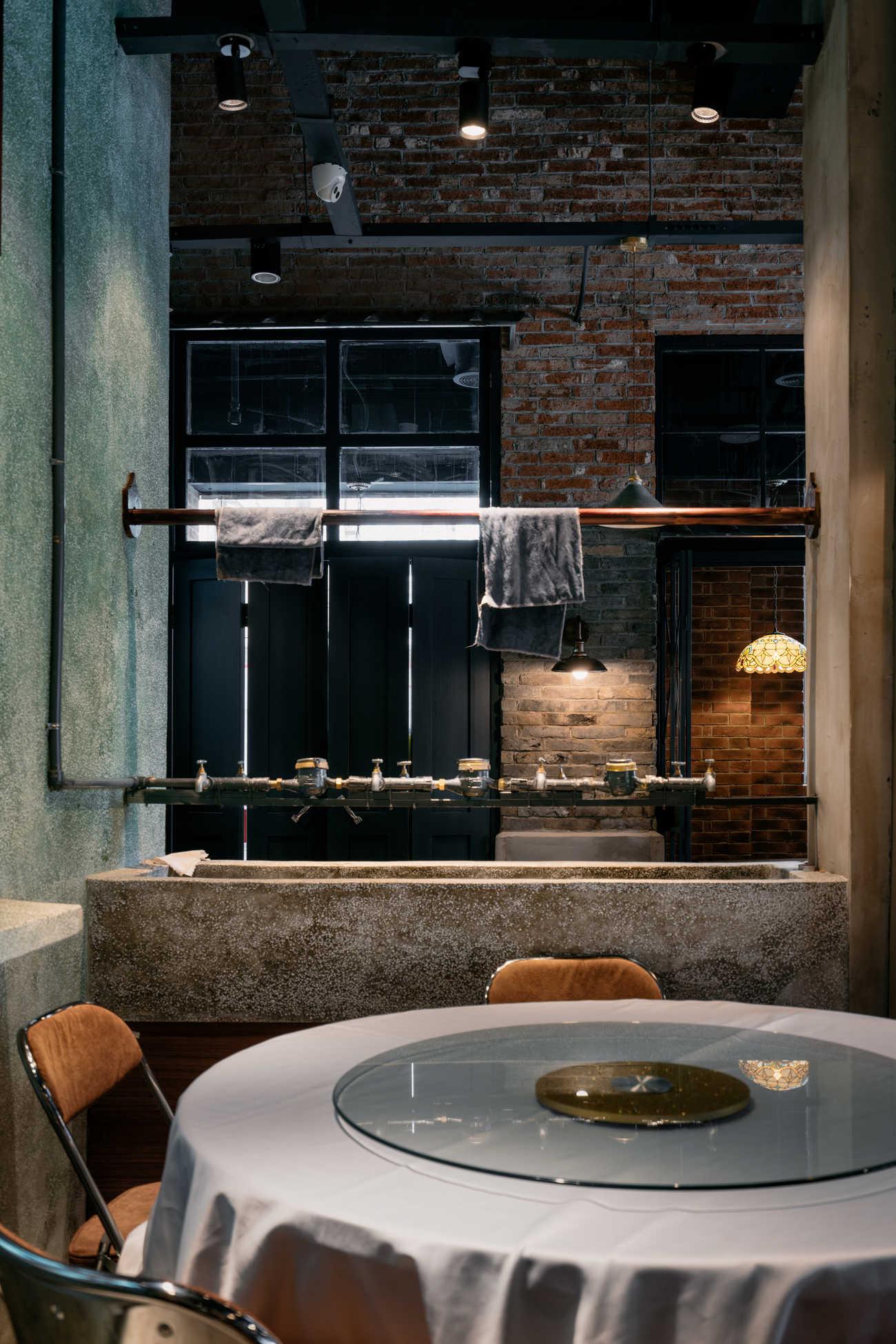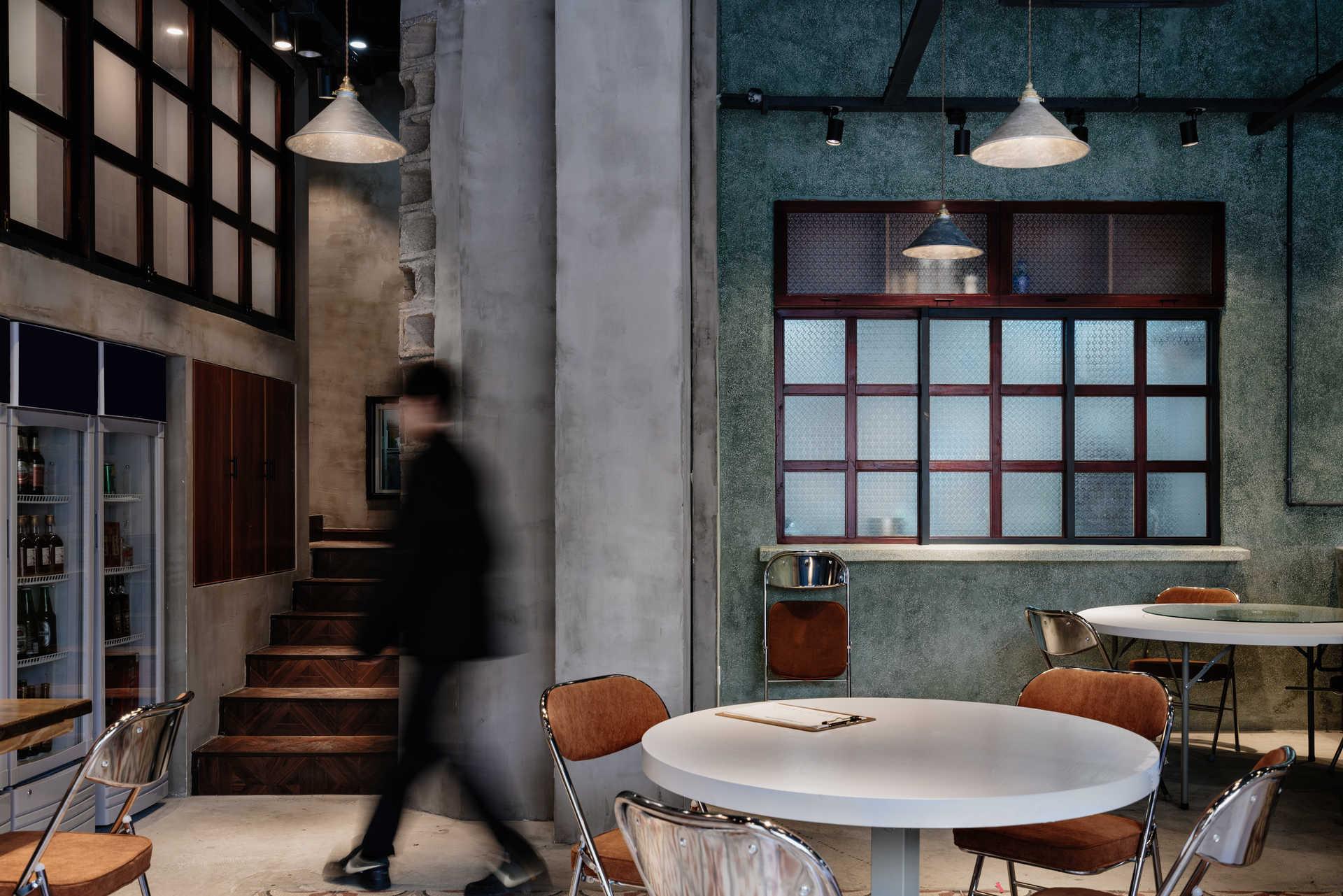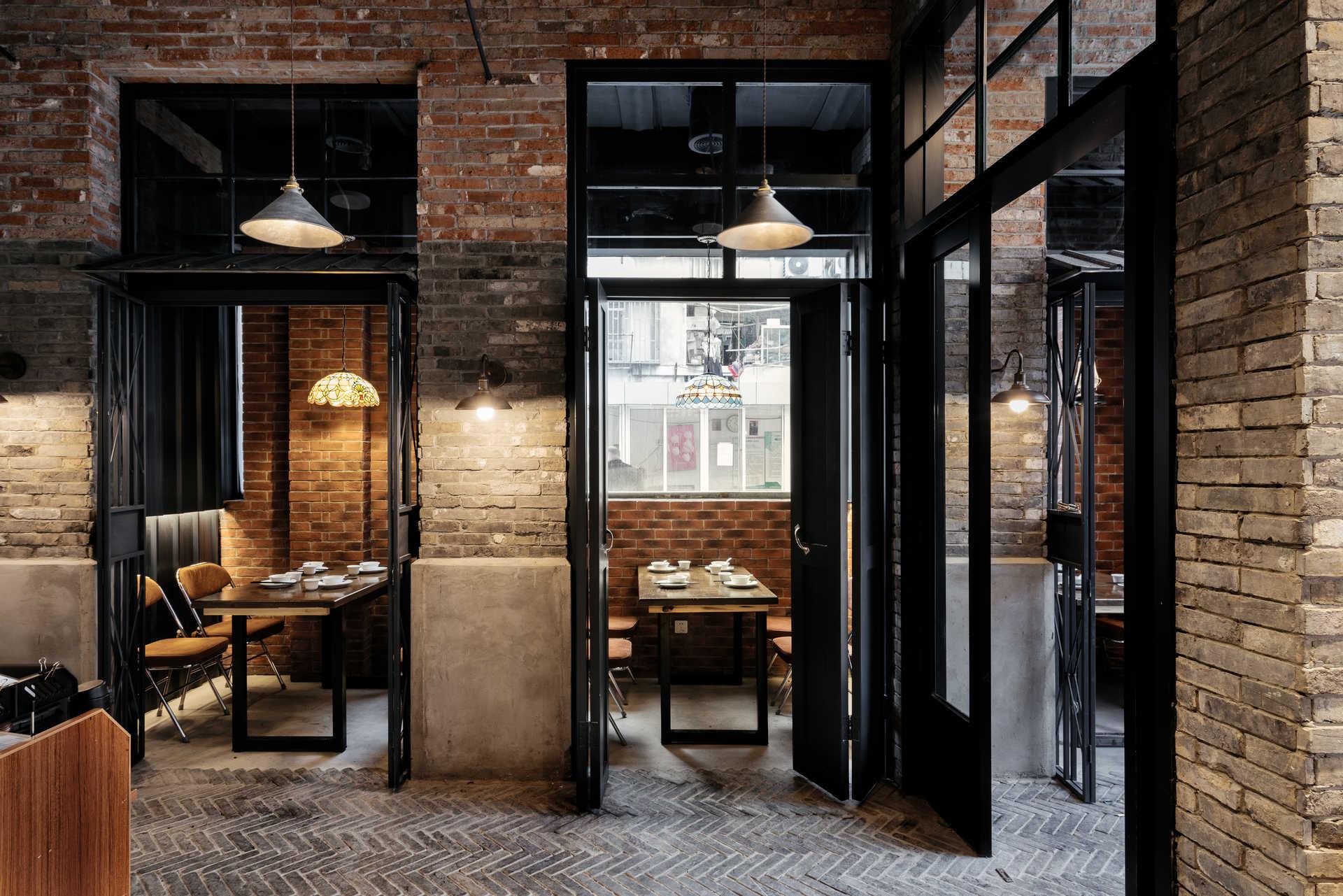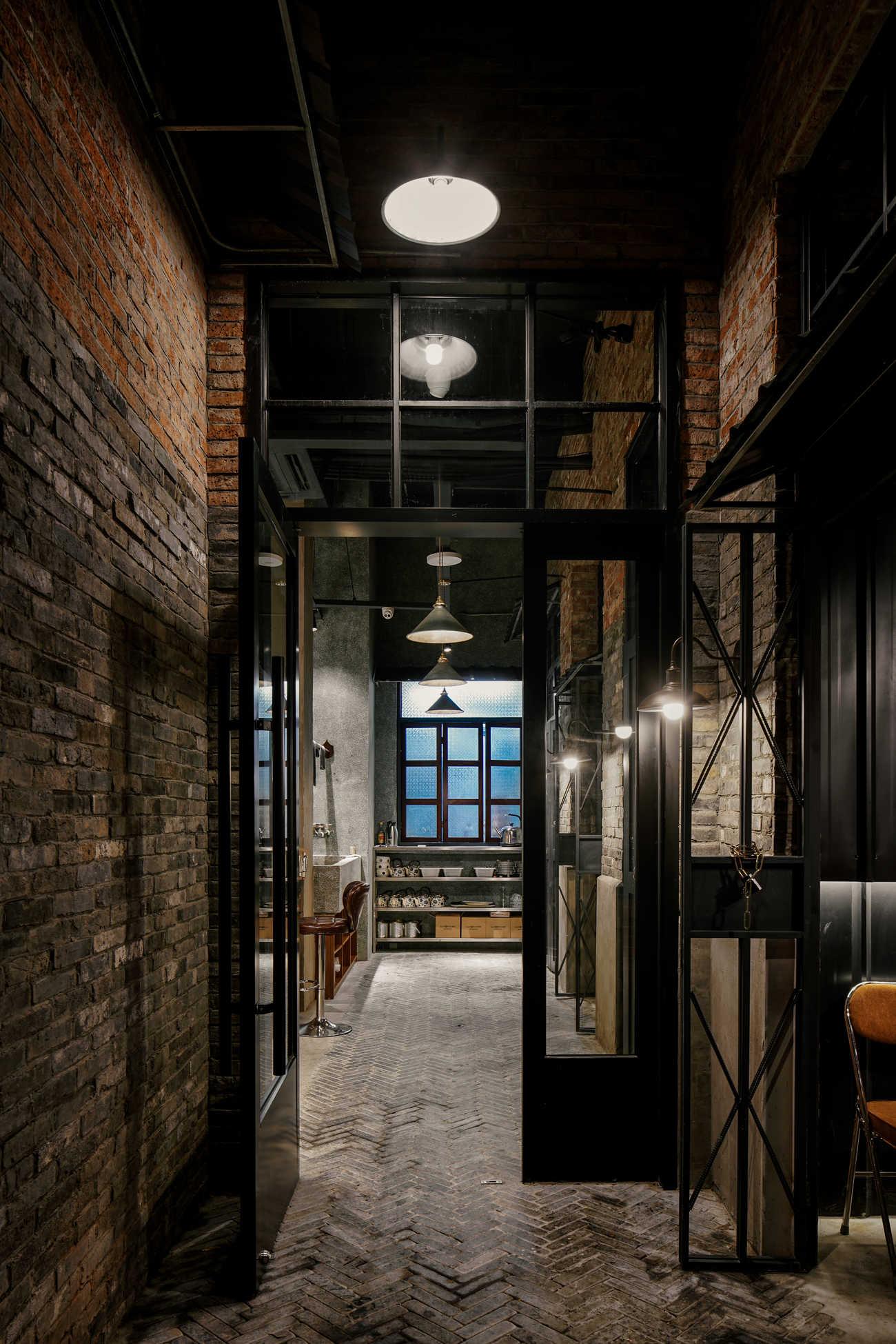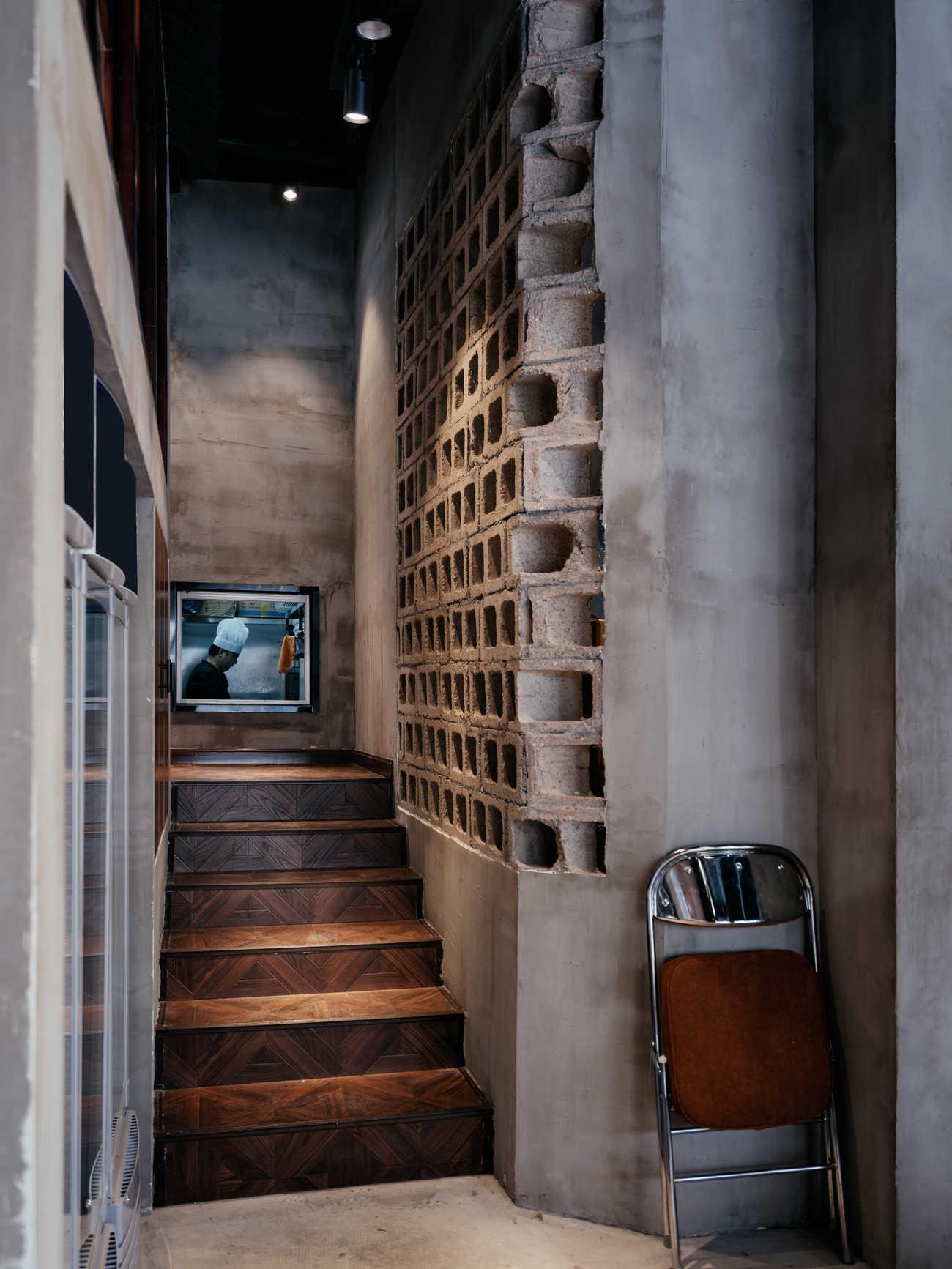Maotou
Restaurant
After years of exploration abroad, in 1990s, Mr. MAOTOU returned to the alley where he grew up, and became the owner and the chef of the diner at the neighborhood. During the decades of urban renewal, although his food remains as it was at the time alley huddled with families, most of his guests relocated all over Shanghai. In order to introduce his food to more people and share the happiness, the son of Mr. MAOTOU plans to open a new MAOTOU restaurant that locates at DAMUQIAO road.
At the boundary of HuangPu district and Xuhui District where none of the classic stylish shanghai architecture exists, Damuqiao Road is occupied by ordinary residential buildings from 90s. The building facades are lined up with windows with different manufactured styles, and the elderlies chats aside from the store fronts appears with distinguished looks. All these mess together implies a sense of happiness and freedom from the neighborhood.
1.1
 Under the scope of this specific street, the design team focused on “Localization” in terms of materiality, experience and culture, in order not to disrupt the existing vibe. The layering of the broken concrete walls, red bricks and grey bricks endows a trace of time. The large glass store front allows the liveliness inside to be seen by the pedestrians passed by.The entrance is hidden at alley aside, so that people walk into the restaurant as if they return home with the smell of the food ready to eat. The “alley” also helps to bring outside environment into the interior space.
Under the scope of this specific street, the design team focused on “Localization” in terms of materiality, experience and culture, in order not to disrupt the existing vibe. The layering of the broken concrete walls, red bricks and grey bricks endows a trace of time. The large glass store front allows the liveliness inside to be seen by the pedestrians passed by.The entrance is hidden at alley aside, so that people walk into the restaurant as if they return home with the smell of the food ready to eat. The “alley” also helps to bring outside environment into the interior space.
1.2
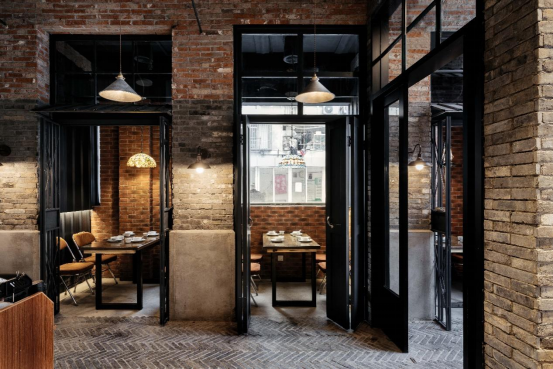 The connection between inside and outside appears at each window as well. The framing images of the buildings, streets and pedestrians outside, create an immersive experience, as if people sitting inside are parts of the story happening at the street.
The connection between inside and outside appears at each window as well. The framing images of the buildings, streets and pedestrians outside, create an immersive experience, as if people sitting inside are parts of the story happening at the street.
1.3
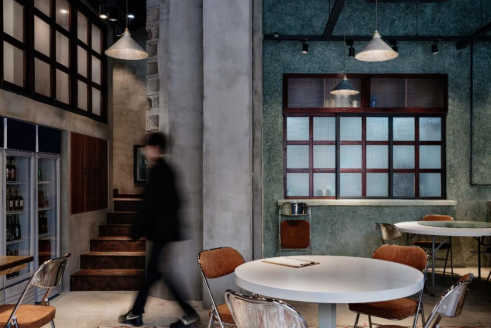 In order to interpret nostalgia under the circumstance of the present, the design team decides to deconstruct the scenes from Maotou’s memory and reconstruct to serve the current use. The space is divided into three major parts, including the alley, the courtyard and the mezzanine. The various space types also provide diverse dining experiences.
In order to interpret nostalgia under the circumstance of the present, the design team decides to deconstruct the scenes from Maotou’s memory and reconstruct to serve the current use. The space is divided into three major parts, including the alley, the courtyard and the mezzanine. The various space types also provide diverse dining experiences.
1.4
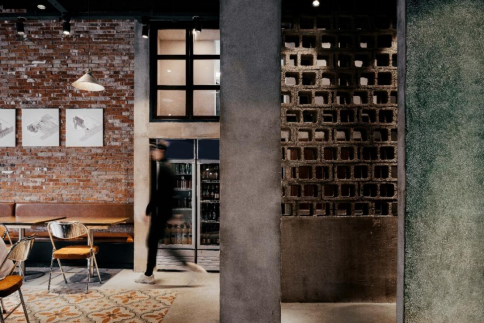 The faded red bricks, the distained grey bricks and the textured concrete walls, collage with decorated porcelain tiles and wood floors. The boundary of the space is blurred with the mixture of rawness and finesse, and the materiality reveals the memories from different ages. The contrast of textures, under a harmonious color palette, generates a subtle confusion where nostalgia is hosted.
The faded red bricks, the distained grey bricks and the textured concrete walls, collage with decorated porcelain tiles and wood floors. The boundary of the space is blurred with the mixture of rawness and finesse, and the materiality reveals the memories from different ages. The contrast of textures, under a harmonious color palette, generates a subtle confusion where nostalgia is hosted.
1.5
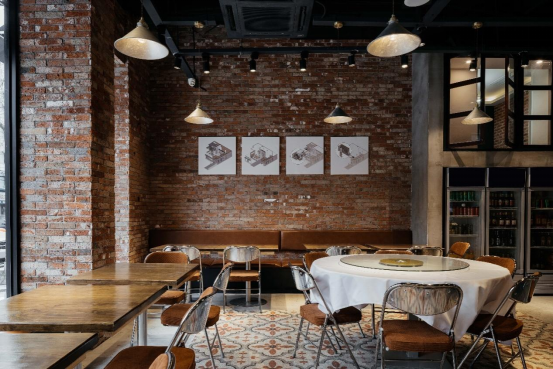 The only art pieces are the exploded-axon diagrams of the restaurant. They also serves the purpose of a hint to show you where you are at the story. Once again, contemporary approach of the art against the rawness of the background wall, emphasizes the hierarchy and the narratives of the space.
The only art pieces are the exploded-axon diagrams of the restaurant. They also serves the purpose of a hint to show you where you are at the story. Once again, contemporary approach of the art against the rawness of the background wall, emphasizes the hierarchy and the narratives of the space.
1.6
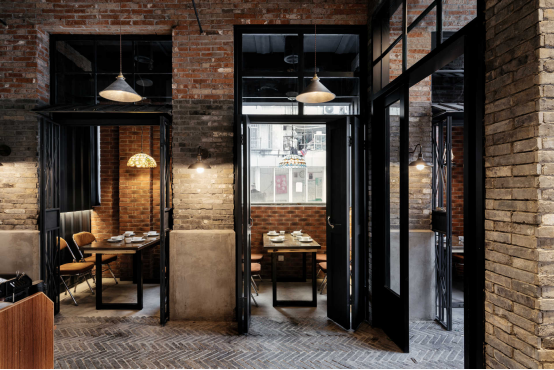 Maotou Restaurant helps you to be sunken in the pleasure, from the memory and the current, under the time frame of a meal
Maotou Restaurant helps you to be sunken in the pleasure, from the memory and the current, under the time frame of a meal
